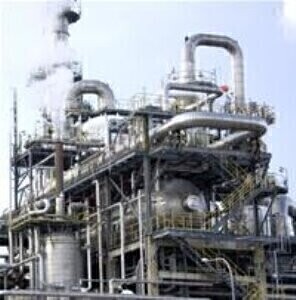Fuel for Thought
Could Waste Help Refineries Produce Low-Carbon Fuel?
Dec 08 2022
There’s a lot of talk about how the petrochemical industry is going to transition to low-carbon feedstocks. New analysis by the Energy Institute and Concawe has suggested one idea – and it will help with clearing up waste, too.
The report investigates those waste-to-product (WTP) technologies that could plausibly be deployed in Europe’s refineries in the next few decades, keeping refinery assets in use whilst shifting the industry towards low-carbon materials. And with 2bn tons of waste produced annually across the globe, there’s a chance that such a scheme could tackle two of the world’s most significant environmental challenges in one fell swoop.
The first phase of the research, published this year, gave a detailed examination of four waste-to-fuel (WTF) refinery pathways using seven different waste-feedstocks, which were selected on the basis of projected volumes as well as the level of interest shown by professionals in both industry and academia. In the course of the research, these seven were reduced to four: mixed residual waste (MRW), non-recyclable mixed plastic waste, sewage sludge and municipal biowaste were. In general, MRW has the largest annual volumes (approx. 222 million tonnes annually) but it is predicted that municipal biowaste could yield significant volumes with improved processes. The researchers rejected the use of landscape-care biomass, automotive shredder residue, and used tyres.
A wide range of possible conversion pathways exist. With expected declines in gasoline and heating oil moving forward, due to electrification, the researchers focussed their efforts on conversion pathways oriented to distillates, i.e. diesel and jet, which account for roughly 40% of refinery outputs. For MRW, the report deems gasification using Fischer-Tropsch (FT) synthesis as the most suitable conversion technology, since the feedstock is not separated and gasification is a little less sensitive to various contaminants than other technologies, producing wax for use in refining. Pyrolysis is given the green-light for converting mixed plastic waste into refinable pyrolysis oil. When it came to sewage sludge, the researchers saw a potential conversion-pathway using hydrothermal liquefaction (HTL) which renders HTL oil, given its ability to deal with the large amounts of moisture present in the waste-stream.
At the moment, refineries in the EU receive between 20 and 50 kilotons of crude oil every single day, which is an exceedingly high benchmark for these new fuels to meet. As a result, the research expressed concern regarding the existing scale of WTF production in comparison with conventional refining and suggested that the industry would not achieve well-to-wheel net-zero emissions without also exploring complementary low-carbon feedstocks, like e-fuels, and technological mitigation, like carbon capture and storage (CCS). Furthermore, there are product quality risks. Although working with a single waste-supplier would make it easier to regulate product quality, genuinely scaled-up production facilities would require more than one supplier and would be expected to have large variability in terms of product quality.
But just how close is the industry to implementing any of these ideas? Currently, some of the conversion pathways discussed in the report are approaching technology maturity, particularly the Fischer-Tropsch process, but more research is required for the technologies producing pyrolysis or HTL oils.
In the near future, researchers for the Energy Institute and Concawe will go on to consider what other uses that these waste-streams can be put to outside of the refinery supply-chain as well as the availability of these feedstocks. Finally, in the third phase of the project, the partnership will compile a report on the comprehensive viability of WTP pathways until 2050 to be used by a number of different stakeholders.
Digital Edition
PIN 25.3 June/July
June 2024
Analytical Instrumentation - Recent Advances In Various Bench Scale Accelerated Oxidative Testing Methods For Fuels - Petrochemical Industry: Anton Paar Solutions Streamline Processes, Reduce H...
View all digital editions
Events
Jul 30 2024 Jakarta, Indonesia
Jul 30 2024 Jakarta, Indonesia
China Energy Summit & Exhibition
Jul 31 2024 Beijing, China
Jul 31 2024 Chengdu, China
Aug 05 2024 Moon Township, PA, USA


















